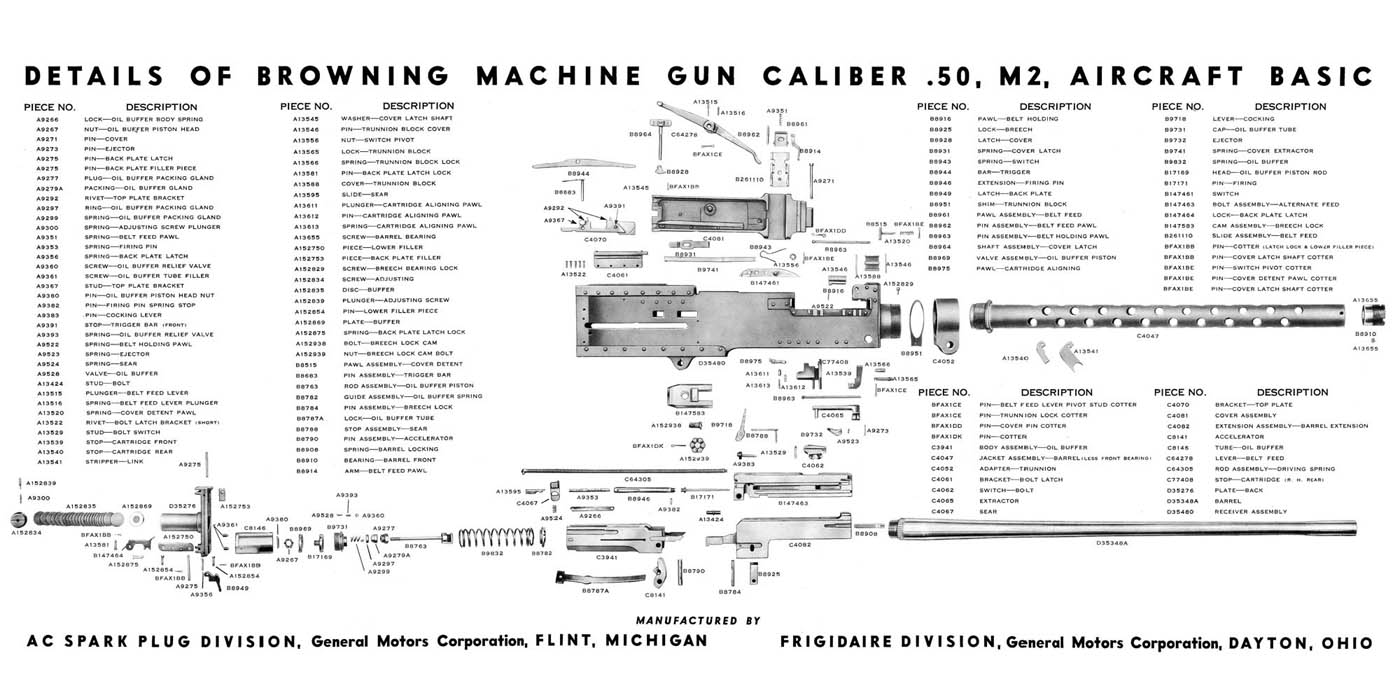
Having heavily relied on the French 8mm Hotchkiss in wake of other domestic products not cutting it on the soggy battlefields of the Great War, there was a push by the American army to field a machine gun of their own. John Browning was more than up to the challenge and by 1917, the M1917 heavy machine gun came to be and was chambered with the proven .30-06. Not long after, the iconic M1919 machine gun emerged and, as mentioned in our previous issue, the primary reason why the .30-06 saw such a long service life.
When Browning was challenged with the development of a large calibre machine gun cartridge, there are two philosophies we must assume he applied. One was the age old adage of, “if it ain't broke, don't fix it” and the masculine cliche of, “bigger is always better”. Bigger than what you ask? Well, most anything would be the obvious answer; but we refer to the .30-06.
You see, when Browning contemplated the design of an even larger heavy machine gun cartridge capable of taking down aeroplanes or reducing enemy fortifications to rubble, he didn't need to resort to his design genius to achieve his goal. The logic was obvious: take something really good and make it bigger. It was the .50 BMG (short for Browning Machine Gun). Easily described, it is more or less a .30-06 on steroids. Officially entering service in 1921, the .50BMG enjoyed relatively quiet beginnings while the same logic was applied to the M1919 in the creation of the M2 Browning machine gun, a M1919 on steroids... More or less.
The M2 Browning was an instant success and remains in service today, much of which is owed to the superior ballistics of the .50 BMG. To put such into perspective, the muzzle energy from a .30-06 sits usually between three and four kilojoules. The .50 BMG? Well, depending on the cartridge load, you're looking at anything from 14 and 18. With velocities exceeding 3000 ft/s and a bullet seeming to have an arrogant disregard for the laws of physics from its impeccable drag coefficient, the .50 BMG was a do-it-all like its little brother from which it came. So good that in 1967, the infamous US Marine, Carlos Hancock, took advantage of such and set a then record for longest confirmed kill during the Vietnam conflict at a distance of 2090 meters. The astonishing part is he didn't do it with some early .50 BMG chambered sniper rifle. He did it with a M2 Browning fitted with a telescopic sight.
Interestingly for us Canucks, his record would stand for 35 years until Master Corporal Arron Perry of the 3rd Battalion of the Princess Patricia`s Canadian Light Infantry changed all that. He bested Hancock's mark with a confirmed kill 2310m distant while engaging Taliban and al-Qaeda combatants during Operation Anaconda in the Shahi Kot Valley area of Afghanistan`s Paktia province. His record was short lived as, during the same engagement, sniper teammate Corporal Rob Furlong, also of the 3PPCLI, achieved a kill at a distance of 2430m. Both men were using the C15 LSRW, the Canadian Forces designation for the McMillan Tac-50 sniper rifle chambered with the .50 BMG. Furlong would hang on that record for over seven years until a British sniper bested him by just 20m.
Mysteriously, it wasn't until the 1980's that .50 BMG chambered rifles even appeared on most peoples' radar. 1980 saw the infamous Barrett M82/M107 come to fruition. Proficient as anti-material weapon system, the logical deduction for its use against personnel at extreme ranges became SOP. Even less surprisingly, other nations wanted to procure their own rifles, prompting other rifle manufacturers to develop their own and, with it, a market for these rifles for civilians. Who wouldn't be interested? With rifles available sporting a guaranteed 0.5 MOA, it's hard not to covet something with an effective range that could be seen from space. So what's the hang up?
Well, there are three. The first, and less importantly, is the sheer size and weight of the rifles. The Bushmaster adorning the cover is 30lbs by itself and sits around 1.4m in length. Outside a short walk form the car, it's hard to imagine carrying one offering much in terms of enjoyment. The second is the cost of the rifles. Many examples exceed $4000 and push nearly $9000. The cheapest we could locate, at $1600, was an AR with a .50 BMG chambered upper capable of only accommodating one round at a time. The third, and most pertinent to the matter at hand, is the cost of the ammunition. When you consider the average loads of .223 and .50 BMG, you're literally shooting 11 rounds of .223 simultaneously. It should come of little shock when you see the prices on boxes of this stuff. For example, the same rounds mentioned above as used by our friends in the 3PPCLI: $70 for a box of ten. So unless your wallet too can be seen from space, acquiring one and keeping it firing could be a challenge.
But who doesn't like a challenge? The cool factor is undeniable and, with muzzle flashes that probably can seen from space, you'll definitely be the centre of attention at the range.